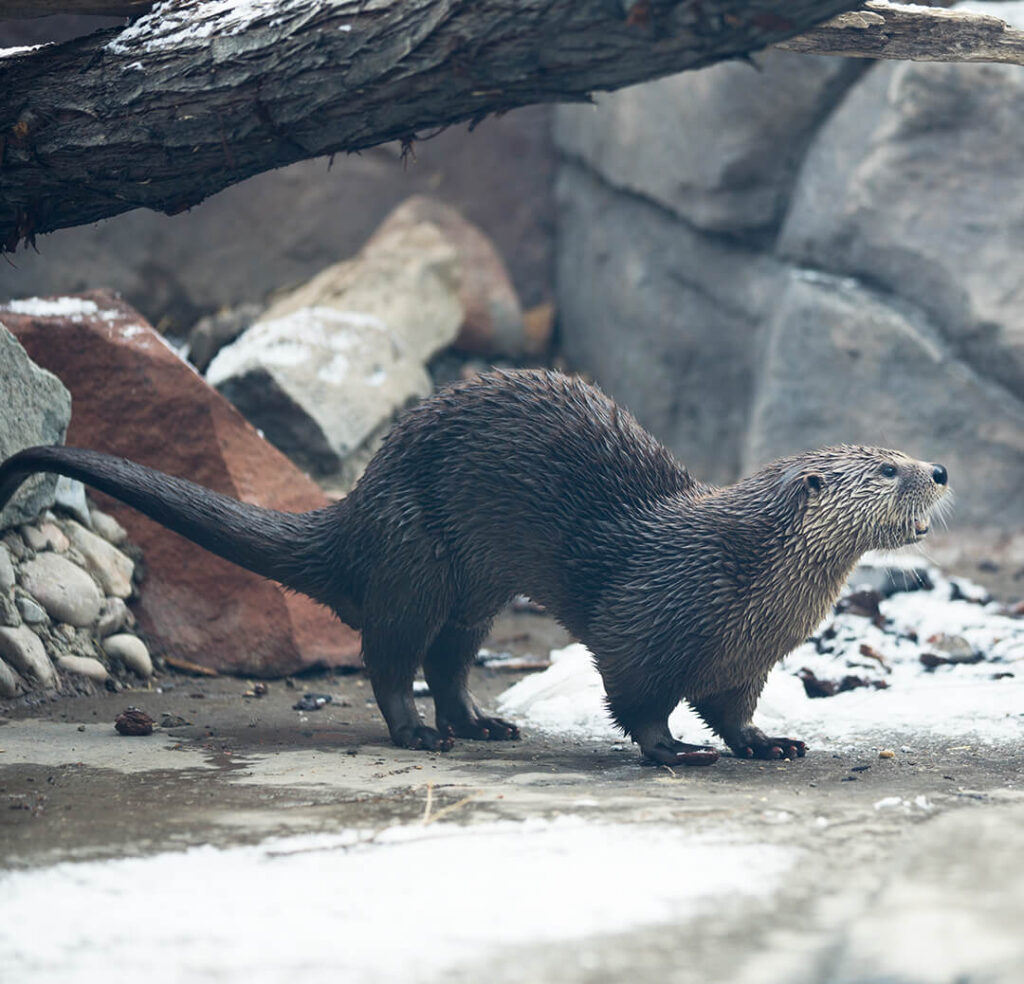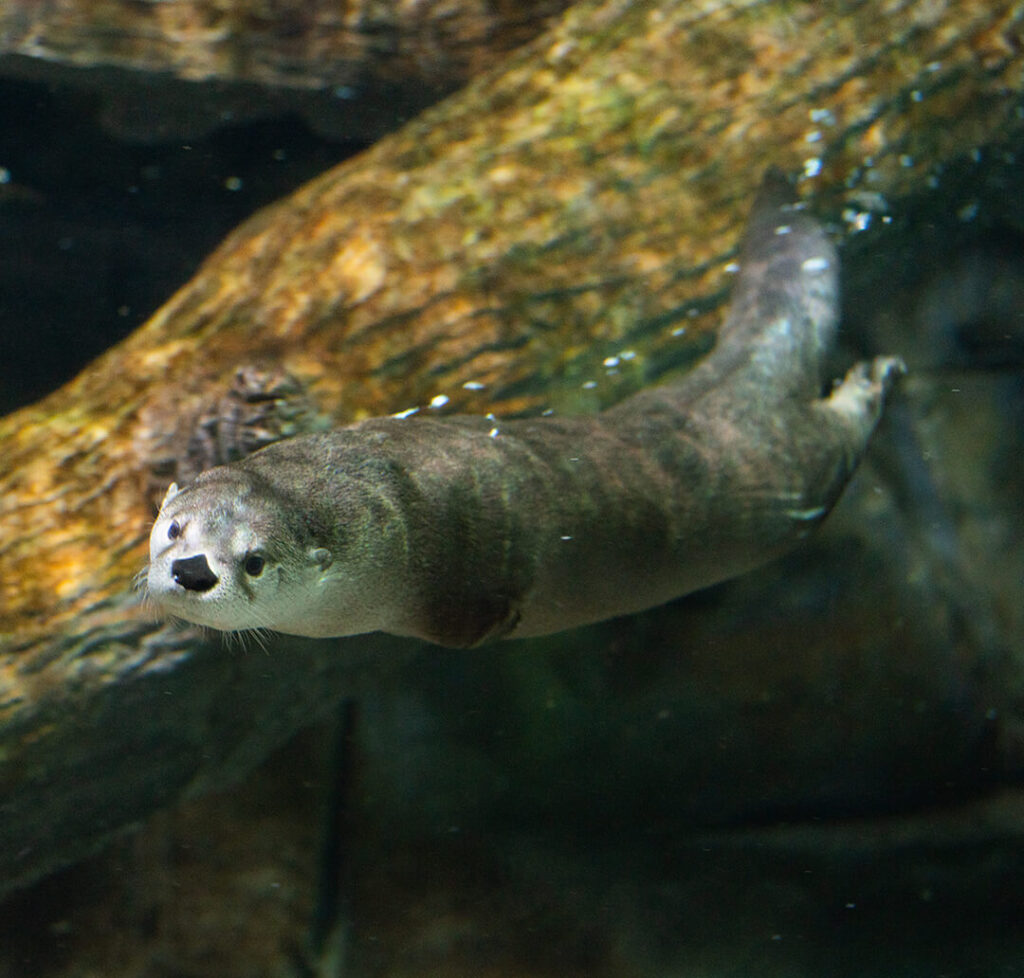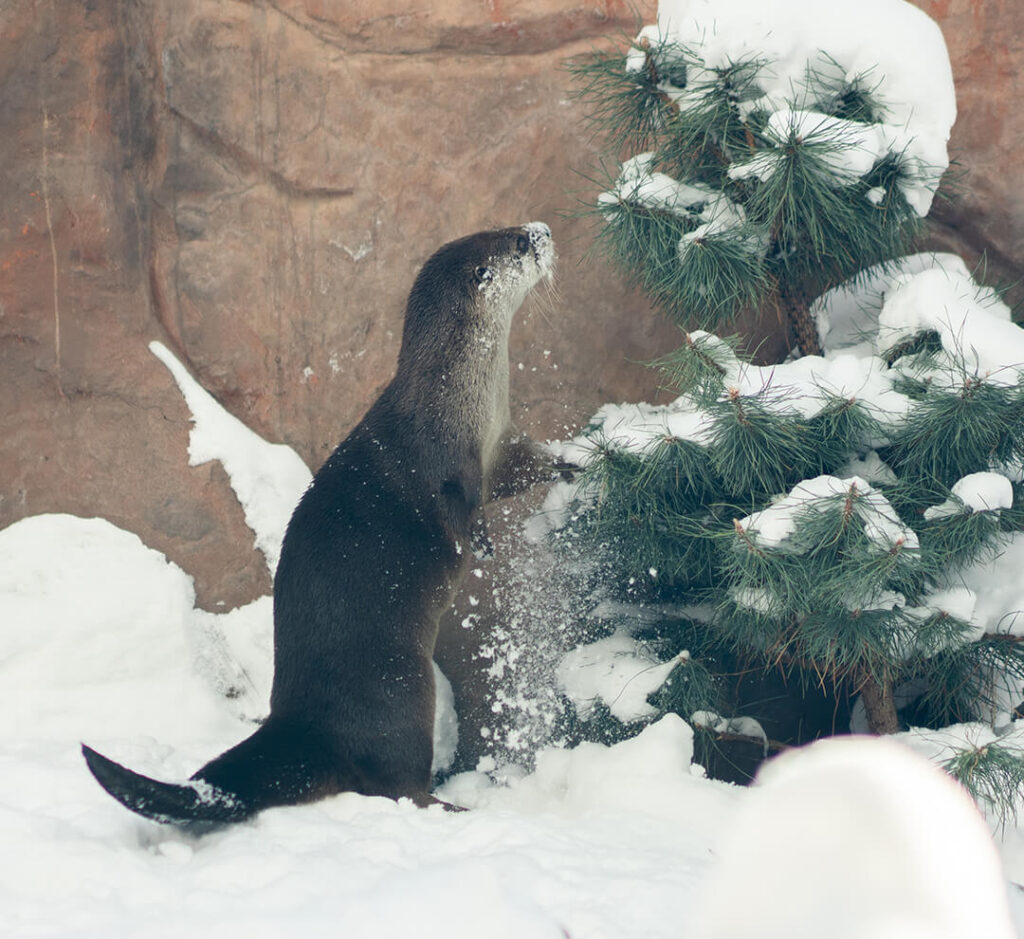We are “otterly” excited to announce our Otters for Waters partnership with the River Otter Ecology Project (ROEP) to expand efforts to conserve waterways and engage communities in Utah. The North American river otter is a charismatic ambassador for healthy aquatic ecosystems, and we aim to inspire action to protect vital habitats through these beautiful animals and programs like “Otter Spotter.

Alongside ROEP, Division of Wildlife Resources (DWR), Weber State University, and local high school science students, we’re researching otter populations and empowering individuals to take action for clean, thriving waterways. Through this partnership, we’re combining education and community science to support the return of river otters to areas like Utah, where they once thrived.
As previously mentioned, Otter Spotter is one way the ROEP is aiding in river otter conservation efforts. Otter Spotter is a website where people in local communities can report potential river otter sightings. So, what do you do if you spot a river otter while fishing or walking? Visit the Otter Spotter page and report your sighting! And if you’re unsure whether your creature is an otter or not, refer back to this blog and make sure to report your sighting. Even if you aren’t positive it’s an otter!
As you may know, Utah is home to not only river otters but other otter-lookalikes like minks, muskrats, and beavers. They are all fuzzy and call Utah lakes and rivers their homes, so it can be easy to get confused about what is what. Below are descriptions of each creature you might encounter when otter spotting, with the otter up first:
River otters are members of the weasel family, who are energetic and active. They are often seen sliding down river banks, climbing rocks or plants, playing or swimming with other otters, catching food, and more! Otters are long, skinny, and furry. When they are swimming, they like to keep most of their body in the water and just stick their heads out. Otters also have very prominent whiskers and are the only creatures on this list with white on their chin and belly. They also have very unique tails, which start wide and taper to a point with hair covering the whole tail.

Now that you know what an otter looks like, here is a list of non-otter creatures and some of their easily identifiable characteristics.
Muskrats: As part of the rodent family, a muskrat is small and stout. They are often mistaken for a beaver rather than an otter, but one difference between both the otter and the beaver is their tail. Muskrats have very long, skinny tails that are often compared to a rat’s tail. They also don’t have fur on their feet!
Minks: A mink has a slender body, similar to an otter, but much smaller. Most minks have a very chocolatey brown coat, almost black when in the water. Their faces are also smaller, sporting a more weasel-like look with a long snout and wide ears on top of their heads.
Beaver: Beavers are the biggest animal of our otter lookalikes and are a part of the rodent family. Beavers are hunchbacks that have a light brown coat with a large, flat, hairless tail and perky ears on either side of their face. They like to carry around sticks or willows in their mouth or paws and swim with most of their body out of the water, unlike the otter.

We are excited to finally offer this resource to our Utah community and for it to aid in river otter conservation efforts. For a more detailed video on how to use the Otter Spotter page, visit our social media platforms!

